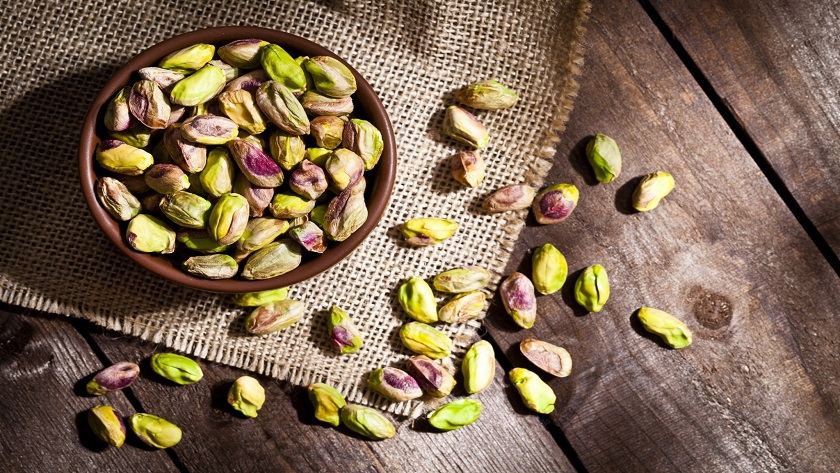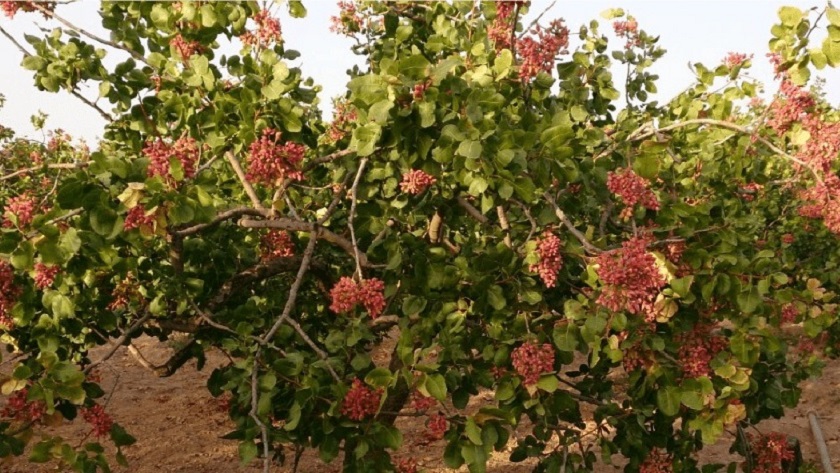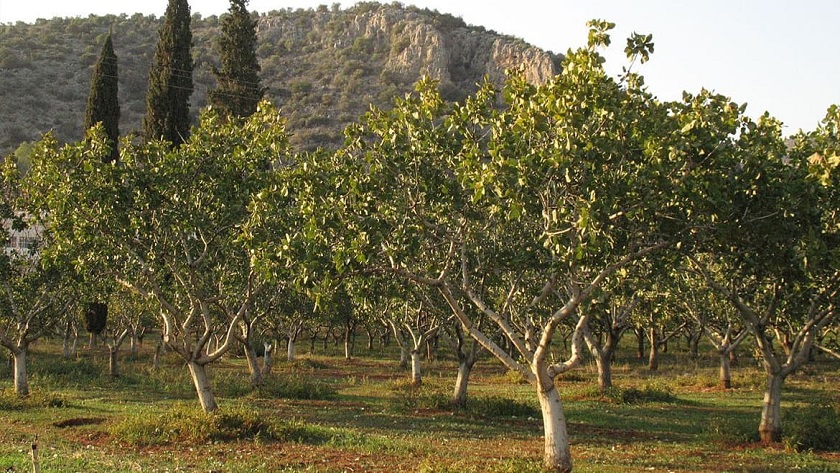Iran Press/Iran News: The English name “Pistachio” also known as “Green almond” is derived from the Persian word “Pesteh”. Pistachios are one of the oldest flowering nut trees. Iran accounts for over half the global pistachio production.
Pistachio is a relatively small tree that thrives in the arid regions of the world close to the 30th parallel. It can grow from sea level (as in Greece) up to 1,800 meters above sea level (as in Iran).
 High-quality Pistachio from Iran
High-quality Pistachio from Iran
Pistachio trees require significant chilling hours in order to produce a viable crop and they present a pronounced alternate bearing habit, which reflects through the variation in annual yield. Iranian pistachios are characterized by a high kernel-to-in-shell ratio, and a rich and unique flavor highly appreciated among consumers around the world. Besides, their polyunsaturated oil content gives pistachios great roasting capacity: nuts can be roasted at between 160 and 180°C .
 Pistachio tree
Pistachio tree
Related News:
Saffron; what Iran is known for
History:
The pistachio has long been a part of human history. Pistachios are one of the oldest flowering nut trees. Archeologists have shown that pistachio trees were cultivated as early as 7,000 B.C. Pistachios were popular nuts throughout history. Queen of Sheba was so fond of pistachios.
The pistachio tree is a plant that has been cultivated for a long time in different regions of Iran. Wild forests and wild pistachio in the northeastern regions of Iran and the areas bordering Turkmenistan and Afghanistan have an ancient background and it is thought that the pistachio tree has been domesticated and cultivated in Iran.
 Pistachio orchard in Kerman province
Pistachio orchard in Kerman province
Main centers of production:
The city of Sirjan and Rafsanjan are famous Pistachio producers in Kerman province.
Other provinces such as Yazd, Khorasan, Fars, Semnan, Sistan and Baluchestan, Qazvin, Isfahan and Qom are also well known for the production of pistachios. Some of the most frequent cultivars in Iran are Mirhavy, Momtaz, Owhadi, Safeed, Wahedi, Sefideh-Montaz, Imperiale de Dameghan, Ravzine and Bademi.
Currently, Iran leads the marketable world supply of pistachios.
Related News:
Photo: Iran nuts and dried fruit expo, opens in Mashhad
 Pistachio orchard in Iran
Pistachio orchard in Iran
The Different Kinds of Persian Pistachios
Persian pistachio differs in various aspects. Many of them use their local name and each name represents a region, shape or quality type.
Persian Long Pistachio (Akbari Pistachio): Akbari Pistachio has a very unique taste and texture. Akbari Long pistachio fruit is large and almond shape. Long Pistachio (Akbari Pistachio) is the most expensive type of pistachio.
Persian Jumbo Pistachio (Kallehghouchi): This type of Persian pistachio is also known as Kalleh ghochi, which is the Jumbo type. The easiest way for identifying this type is the shape of pistachios is rather fat and (in comparison with round) is rather long; this is why it is called Jumbo.
Persian Round pistachios (Fandoghi): Persian round pistachios are the most widely available pistachio variety. Fandoghi is round-shaped and has the lowest shape index.
Kernel Pistachios: This type of pistachio has a totally green color and is used in the food industry. Commonly use to color and flavor the ice cream, chocolate or cake.
 Varieties of Iranian Pistachio
Varieties of Iranian Pistachio
Health Benefits of Persian Pistachio
There are lots of health advantages of pistachios. They’re one of the few nuts which contain most of the nutrition which are essential to humans for complete health. Pistachios consist of nutrition like carbohydrates, proteins, fats, dietary fiber, phosphorus, potassium, thiamine, vitamin B-6, beta-carotene, lutein as well as zeaxanthin, calcium, iron, magnesium, zinc, copper, manganese, vitamin C, riboflavin, niacin, pantothenic acid, folate, vitamin E, vitamin A, as well as vitamin K. All these nutrition make pistachios preferably best for better health.
 Pistachio is greatly nutritious
Pistachio is greatly nutritious
Related News:
Gilan; Hazelnut production hub in Iran
High levels of unsaturated fatty acids and potassium. Both have antioxidant and anti-inflammatory traits. They can lower your chances of cardiovascular disease. Pistachios are bursting with fiber, minerals, and unsaturated fat that can help keep your blood sugar, blood pressure, and cholesterol in check.
Iran's Export:
The EU has imported 9,000 tons of Iranian pistachios during the first half of the current marketing year. Quite exceptionally, only around 40% of the said shipments are of in-shell natural open pistachios. The majority of the volume of shipments to the EU in the current marketing year consists of kernels, green kernels and close shells as raw materials for kernels. Currently, spot demand for Iranian pistachio kernels remains strong in Europe.
Worldwide demand for Iranian natural pistachio kernel is very strong due to its inherent diversity and price competitiveness. Kernels and green kernels amount to 14% of this year’s total tonnage of YTD pistachio export shipments at the end of the sixth marketing month as compared to 10% for the same period last year.
 Iran is the main exporter of this delicious nut in the world
Iran is the main exporter of this delicious nut in the world
Read More:
Pistachio harvest from Kerman orchards; Green gold production hub in Iran
Ashkan Salehian

